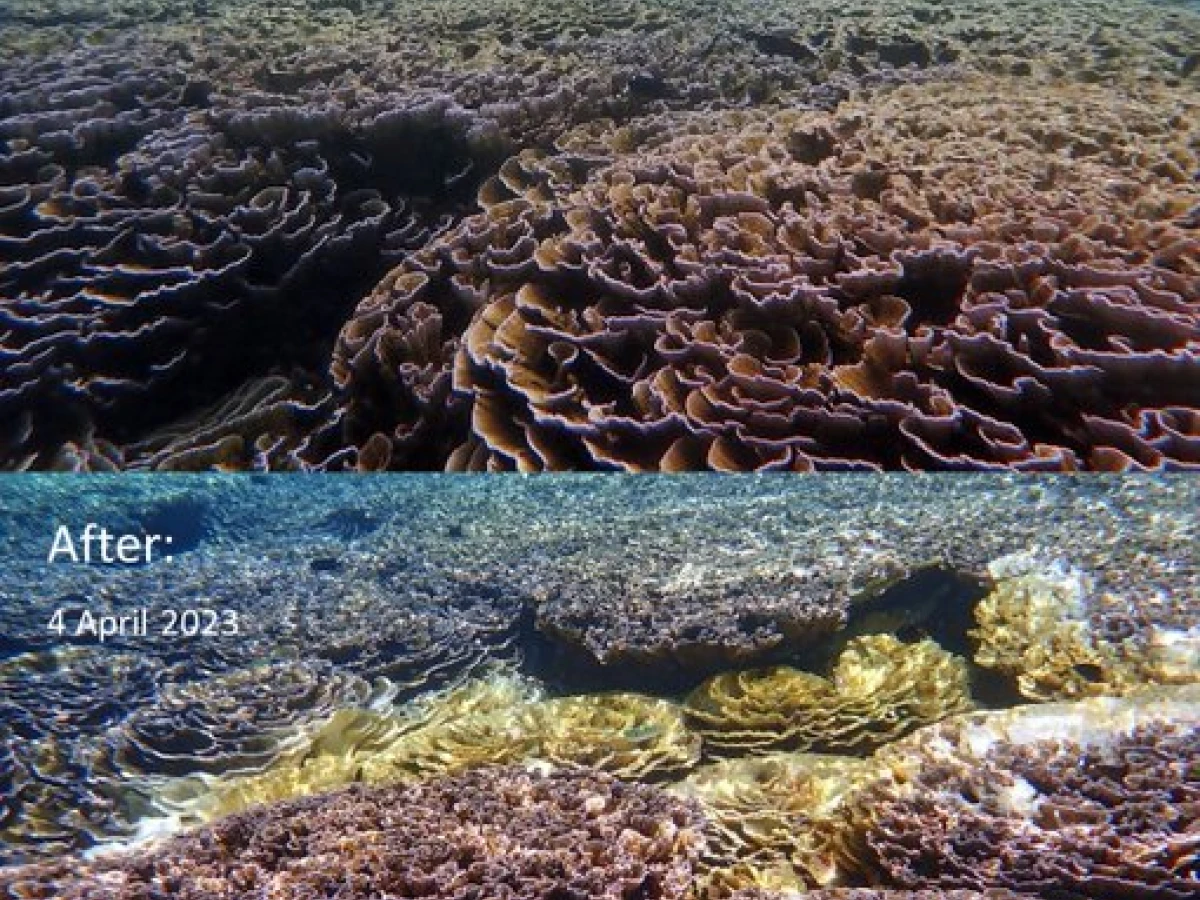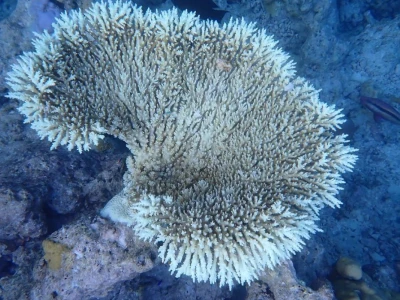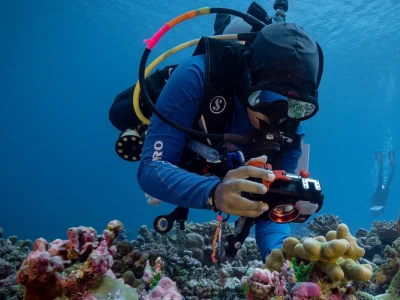
Bleaching at Fulhadhoo's beautiful coral garden as El Nino bites
El Nino is characterised by unusually warm ocean temperatures in the Equatorial Pacific.
This year's El Nino has led to a rise in sea-level temperatures in the Maldives, leading to major coral bleaching events across the archipelago.
Marine Journal Maldives, which provides information on marine life, said on Saturday that there have been reports of bleaching from different parts of the country.
-
B. Fulhadhoo's Montipora coral garden is experiencing bleaching
-
Popular for snorkelling among tourists and locals alike, the destination plays an important role in the guesthouse business
In addition to the coral reefs at Fulhadhoo, reefs across the country have also started showing signs of bleaching, according to those diving and snorkelling in different parts of the country.
Coral bleaching usually occurs when rising (or even falling) water temperatures stress coral polyps, causing them to lose algae (or zooxanthellae) that live in their tissues.
The Marine Journal Maldives has outlined some of the measures that can be taken if there are signs of bleaching:
-
Reducing or slowing down projects such as land reclamation during this period; sand and mud piling up on corals further weakens the ecosystem of the reefs
-
Reducing the damage caused to lagoons by anchoring and not releasing fishing lines and nets
-
Avoiding the removal of live corals to put them in tank
-
Avoiding the touching of corals under any circumstances while swimming and other sea sports
-
Being careful not to touch the corals, with tools or hands, and not to behave in a manner that throws the sand up from the sea floor
-
Keeping the beaches and reefs clean
In a time when there is a high chance coral bleaching, it is important to ensure that corals do not die.
If the environmental temperature drops enough for the survival of the corals, the zooxanthellae exiting the bleached coral will re-enter the coral and save it from dying.
El Nino is characterised by unusually warm ocean temperatures in the Equatorial Pacific. Due to this temperature spike:
-
Sea level, especially the upper layers of the ocean, heats up
-
Changes in ocean currents
-
There is a possibility of impact on fisheries and climate
-
Maldives receives more rain than normal in strong El Nino condition
Seasonal patterns cause an El Niño and La Nina every three to five years. La Nina refers to the cooling of sea levels due to seasonal patterns and air flow in El Nino.
La Nina, which lasted for three years, is coming to an end and el Nino is expected to begin in May, according to the World Meteorological Organisation.
The Maldives Marine Research Institute had warned last month that the country's ocean temperatures could rise significantly in the coming months.
El Nino in 1998 and 2016 led to the death of the underwater ecosystems in large parts of the country.
According to this year's estimates, the alert for bleaching in the Maldives region is currently at the 'watch' level. From mid-April onwards, the alert level will rise further, and the chances of coral bleaching will increase.




